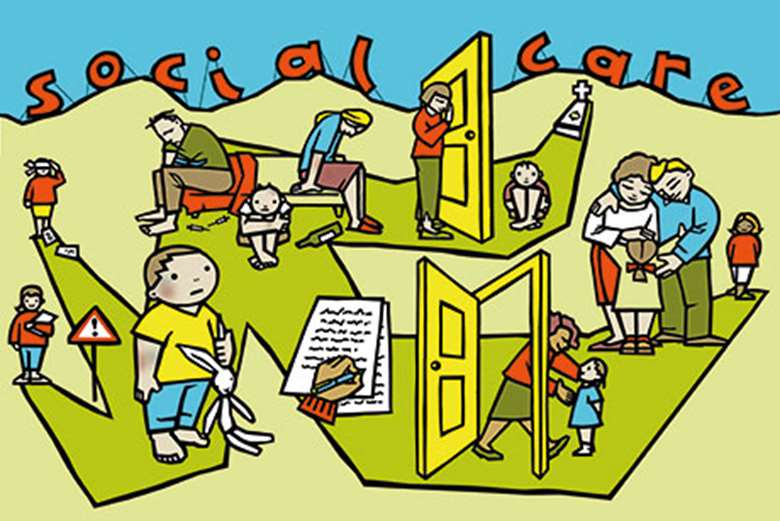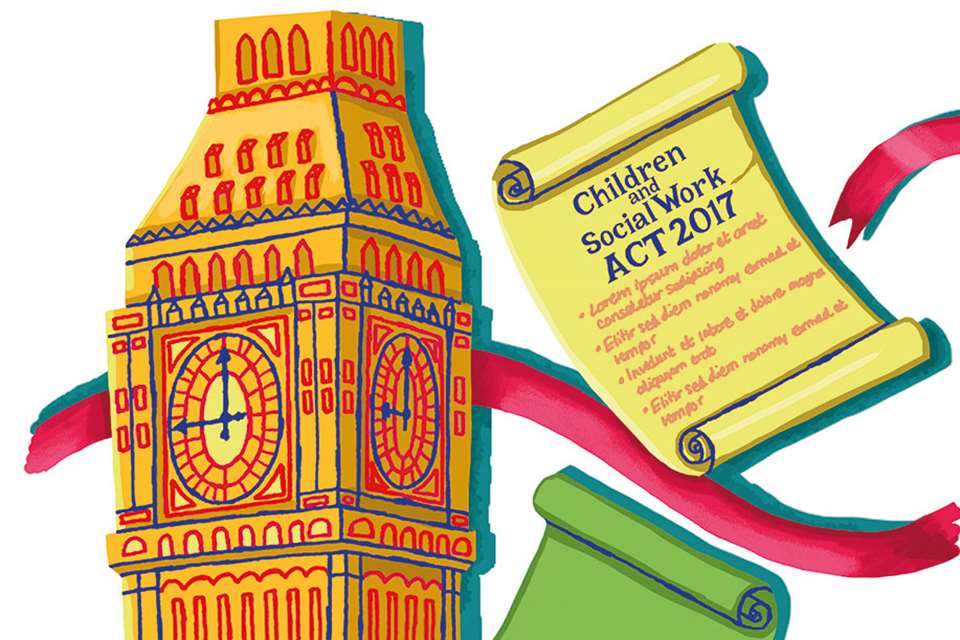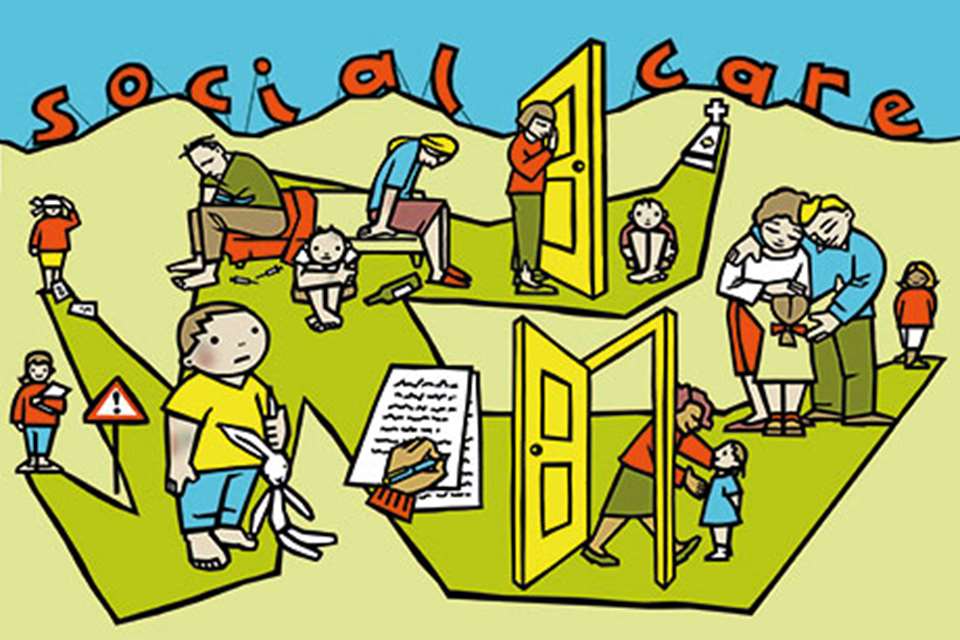Safeguarding, part 3: Workforce - Capable hands
Rachel Buckler
Monday, September 3, 2018
Many of the problems in safeguarding cases – lack of professional curiosity, inadequate information sharing – would be solved with the development of a competent workforce, finds safeguarding expert Rachel Buckler

Download the PDF of this article
 I’m increasingly encouraged by early years professionals I meet who demonstrate high levels of competence and the ability to respond to concerns about children’s welfare.
I’m increasingly encouraged by early years professionals I meet who demonstrate high levels of competence and the ability to respond to concerns about children’s welfare.
They do so with understanding, skill and a sense of urgency when required. Their focus is often child-centred and they recognise what is needed to make sure children are safe and protected.
On the whole, the picture I believe demonstrates an early years workforce that is stronger than ever in meeting its obligations and responsibilities. Practitioners frequently rise to challenges faced as a result of increased complex family needs and vulnerability, inconsistent or poor responses from social care and multi-agency partners that don’t always value their input.
I do, however, acknowledge that for some, the increased expectation to step up and take a larger role in child protection processes can be rather stressful and at times overwhelming. Difficulties can arise when failings occur – ineffective communication systems within organisations, staff not fully understanding their responsibilities or simply not recognising signs of abuse. Sometimes settings may take longer then they should to monitor a situation or wait to see what happens. Records of concerns may be written down, but are not always kept in a chronological order that would help to build upon events over a period of time.
Know your community
While early years practitioners have many advantages given their ongoing knowledge of families and children, it is vital that they also understand wider issues pertinent within their community. For example, we know that female genital mutilation (FGM) will be prevalent within some communities. Likewise, if practitioners know there is a high level of reported incidents of domestic violence or abuse, this enables them to be vigilant and responsive by addressing any concerns along with knowing where to signpost or who to go to for specialist support.
Local safeguarding children boards (LSCBs), which are becoming ‘safeguarding partners’ under the Children and Social Work Act 2017, will have safeguarding priorities to address as a result of identifying needs in their area. These priorities are identified through serious case reviews and recommendations. These priorities can be both locally and nationally driven. It is important that designated safeguarding leads are aware of these priorities and work in partnership with others to address them.
Professional responsibility
I’ve been approached several times by practitioners who have been concerned about a child but find colleagues have dismissed their worries or chosen not to report something that was clearly a safeguarding matter. Sometimes we have to stand up and be counted. Being that single voice that is challenging someone else’s point of view can be hard but necessary, particularly if decision-making processes are not centred on the child’s welfare. This is certainly the case when addressing allegations against professionals or if the need for someone to whistle-blow arises.
In her 2018 book Child Protection in the Early Years, Eunice Lumsden says ‘all children have a right to a workforce that understands their obligation in ensuring the welfare and safety of the infants and children in their care’. Of course, this uncompromising principle extends beyond our own internal relationships. Multi-agency partnerships between early years practitioners and other professionals are still very much an ongoing area for development. They need further investment in order to increase value placed on the role of early years practitioners from other disciplines, and significant acknowledgment from others as to their credible and unique status within the sector.
The dangers of non-reporting
In March this year, an investigation into the death of a 16-month-old girl led to the closure of her nursery in Morecambe. While the death of the child was not associated with the nursery, it triggered a visit from Ofsted, which found a number of failings. Ofsted identified a significant amount of evidence, including a child covered in fake tan in order to hide bruises, another requiring stitches as a result of a cut, hand marks on a child’s buttock, a baby frequently collected by its drunken mother, and a child’s disclosure of physical abuse not responded to.
Most concerning was that a child with cigarette burns on the bottom of their feet went undetected. The nursery recorded some of these injuries as a ‘cause for concern’, they were signed off by the manager, but no further action followed. Non-reporting remains a significant failure, as noted in a number of serious case reviews. Ron Lock, writer of the serious case review for Daniel Pelka, who died in 2012, acknowledged, ‘While staff recognised concerns for Daniel, what was missing was a coherent understanding of how to articulate and action those concerns in an effective way’.
Building respectful relationships between ourselves and other agencies is essential and requires all involved to understand each other’s responsibilities. Early years practitioners can demonstrate best practice by:
- having a sound knowledge of safeguarding and child protection matters, and how to follow local procedures and protocols
- appropriate information-sharing
- using evidence-based knowledge to inform reports and make decisions
- working closely with health professionals to identify emerging concerns and monitor progress as part of multi-agency plans
- initiating and taking the lead on early help assessments
- having knowledge of local authority thresholds and expectations of when statutory services should respond
- applying up-to-date knowledge of children and families to determine risk and resilience
- being confident to challenge others’ point of view.
Training
We will soon see a revised Level 2 Early Years Practitioner qualification. From September 2019, an increased focus on safeguarding will be required to strengthen trainee competencies with updated criteria on knowledge of legislation and guidance, types of abuse (including domestic abuse and understanding roles and responsibilities, which will include reporting of child protection concerns).
While this is a welcome development and a good place from which to start, so much more is needed. Current and prevalent themes such as FGM, the extent and effect of the toxic trio of domestic violence, substance abuse and mental health problems, and other topics that underpin safeguarding knowledge, are vital for practitioners to understand. Being aware of LSCBs’ objectives is therefore essential. We should not only identify them, we should ask how they may present with children and families with whom we work and consider what action we will take to respond to them.
What should settings look for in terms of training? As well as any training needed on safeguarding policies, procedures and local priorities, I would argue that softer skills are vital for effective safeguarding practice in a setting. For instance, engaging in difficult conversations with parents, or knowing how to influence referral positively for designated leads, can be vital in getting help for a child in need.
As a sector we are also beginning to gain a better understanding of the importance of healthy brain development. Neuroscience experts challenge us to consider what happens when young brains are exposed to prolonged periods of stress. Our responses and interventions must align with the necessity to understand better the emotional needs of young children and the enduring impact that the adverse childhood experiences can have on them.
We need more neuroscience-informed knowledge and training if we are to do this effectively.
CASE STUDY: OPERATION ENCOMPASS
Operation Encompass is an initiative that supports children and young people exposed to domestic violence and is delivered in partnership by the police and education services. The programme, currently used by 33 police forces in England, notifies schools of any domestic abuse incidents in order to place the child on a ‘pastoral radar’.
In Wigan, where statistics for domestic abuse are significantly high, they have extended the programme to early years settings. Steve Martlew, business manager for Wigan’s Domestic Abuse and Sexual Violence team, says, ‘We want the most vulnerable children, those aged under five, to also benefit from the positive results of the programme.’ There are currently two cohorts piloting this ground-breaking initiative, which equates to 14 nurseries in total. Mr Martlew notes that since the pilot began in April, they have already had a number of notifications made to nurseries about incidents of domestic abuse where a child has been present.
This proactive approach ‘allows early years settings to have open conversations with parents and the wider family, given their perfect position relationally with them, and in particular with mums’, he says. Settings are also helped to refer parents to specialist services. Mr Martlew’s team hope to extent Operation Encompass over the coming months to more settings, including childminders.
- See the rest of this series on safeguarding here








